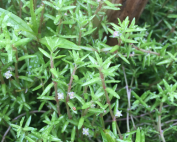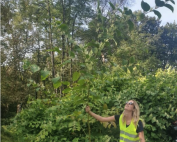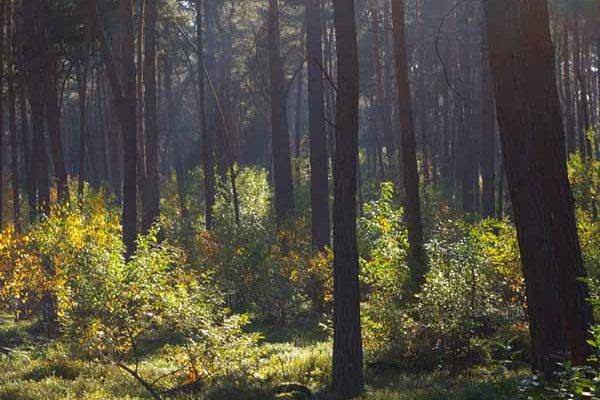
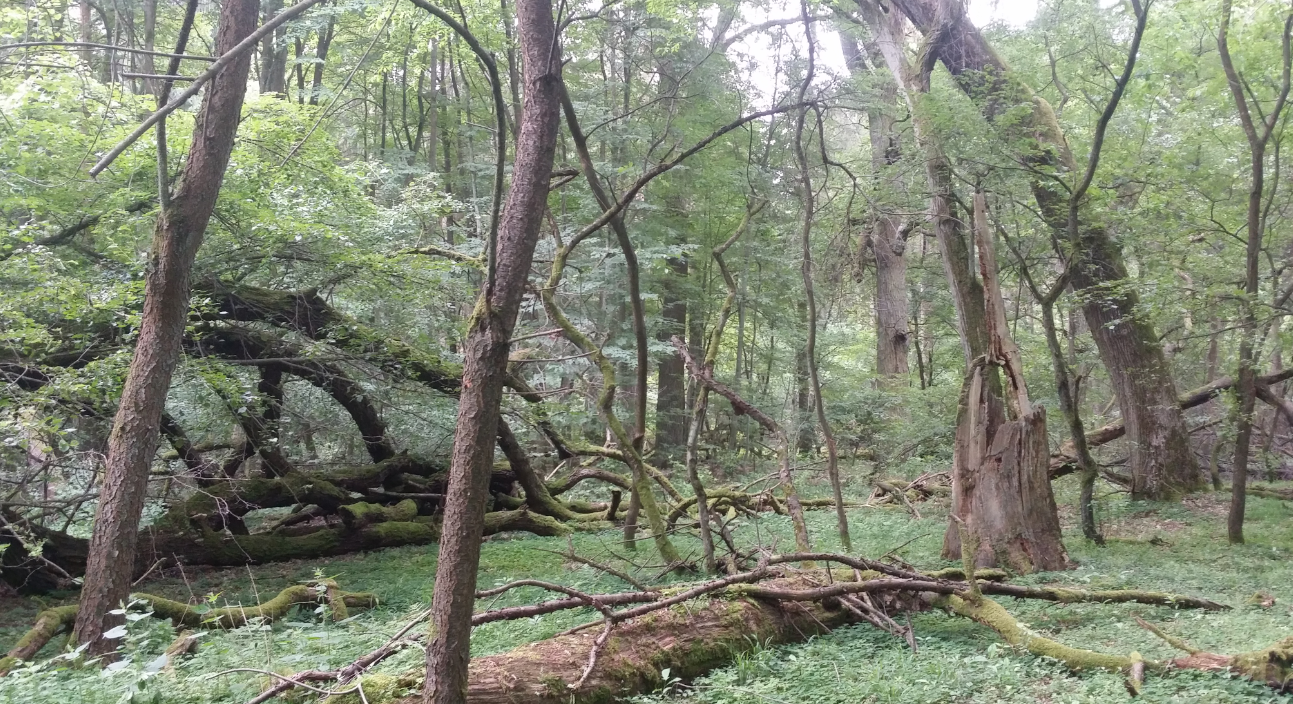
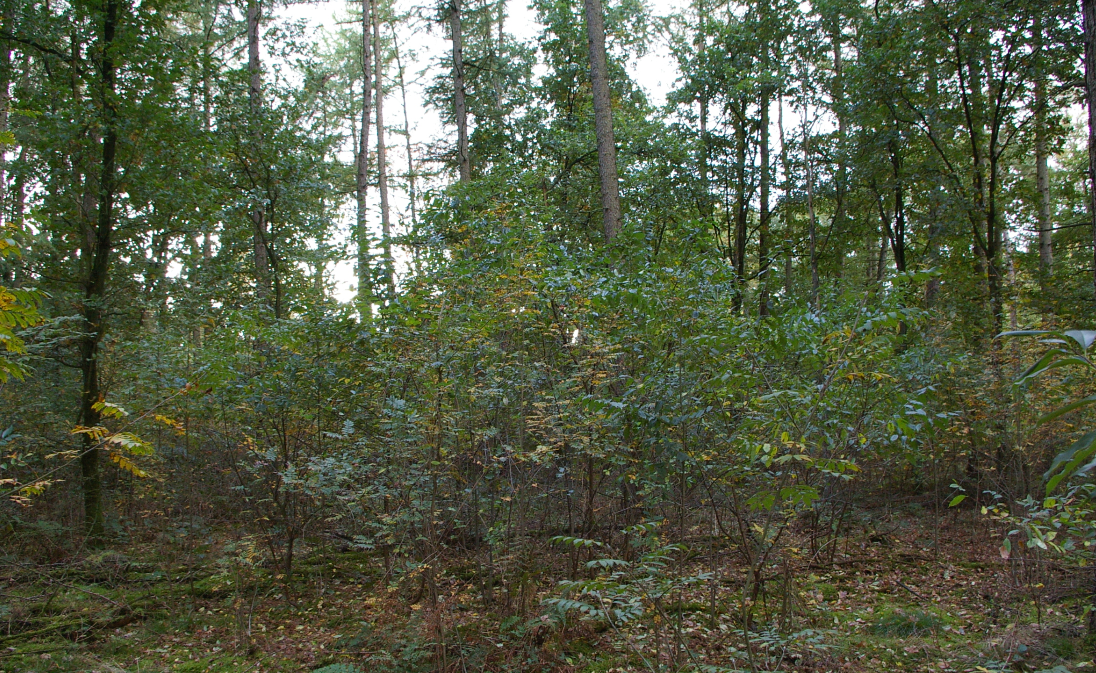
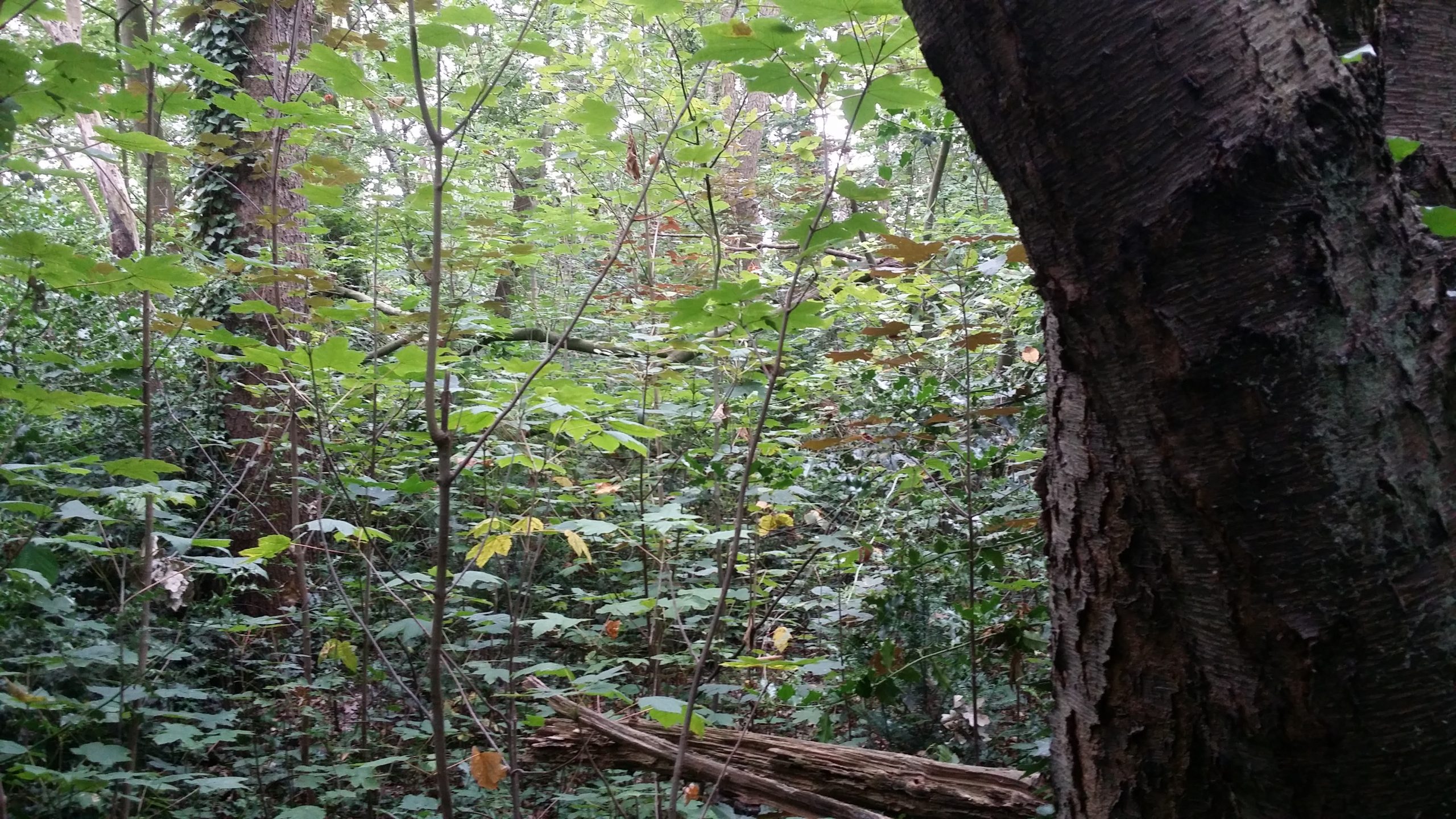
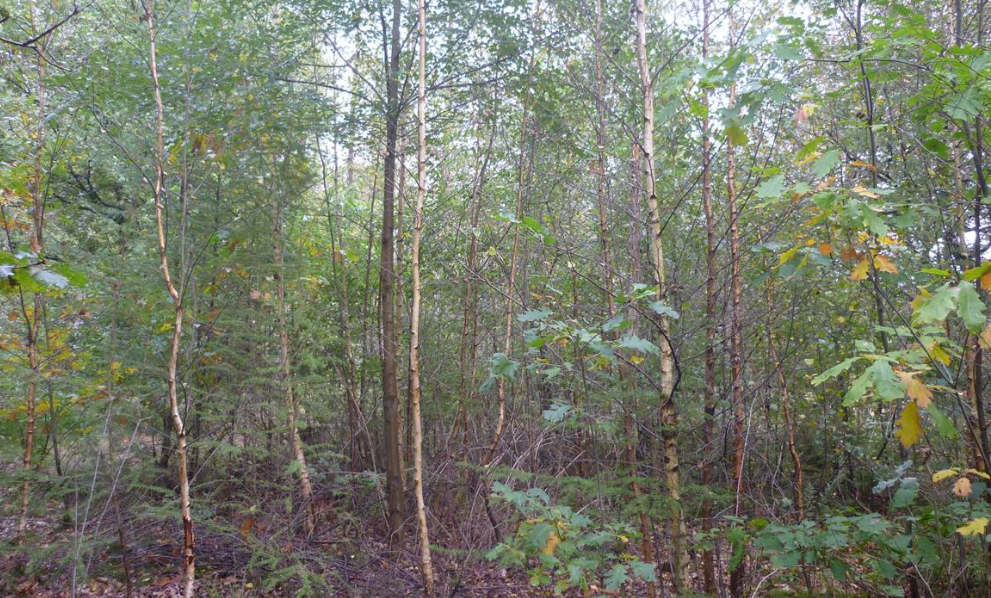
The ecosystem resilience approach in forests
Compared to other habitats, forests are characterised by the woody vegetation that mostly defines the ecosystem. They have their own flora and fauna with specific species that are often found mainly or exclusively in the forest. In addition, the forest often provides several functions, also called ecosystem services.
In LIFE Resilias we work in a targeted way to increase the resilience of the forests to prevent the dominance of invasive tree species, such as black cherry (prunus serotina), red oak (Quercus rubra), black locust (Robinia pseudoaccacia) and possibly in the future also the tree of heaven (Ailanthus altissima). The example species in the project is black cherry. The ecosystem resilience approach for other tree species will follow later in the project.
The ecosystem resilience approach in forests
Dominance of invasive tree species in forests is possible if the forest ecosystems are poor in tree and shrub species. Often these forests are even aged, consisting of tree species forming a translucent canopy. Invasive tree species – such as black cherry, red oak, black locust and tree of heaven- are pioneers that take advantage of this excess of light to establish themselves and expand.
Adult forest ecosystems, on the other hand, consist of many tree species, in addition to the pioneers there are also the successor species. The latter can usually establish themselves in low light conditions and cause a high amount of shade when they reach adulthood. Moreover, in these forests, trees and shrubs of different ages occur, creating a layered forest structure that prevents most of the light from reaching the forest floor.
Reintroduction of native species and small-scale forest management
The ecosystem approach to forests is the promotion of the succession of current forests to more mature forest by reintroducing the missing tree and shrub species. Combined with small-scale forest management. This reinforces the stratification of the forest and prevents large amounts of light from promoting the regeneration of invasive tree species.
Species that will be reintroduced are shade-tolerant trees such as small-leaved lime (Tilia cordata), hornbeam (Carpinus betulus), beech (Fagus sylvatica), fluttering elm (Ulmus laevis), maple (Acer spp.), hazel (Corylus avellana)- and fast-growing trees – aspen (Populus tremula), birch (Betula spp.), goat willow (Salix caprea) and sweet cherry (Prunus avium).
Small-scale forest management consists of avoiding large-scale felling, patchy regeneration, selection in the regeneration phase (cutting and breaking) and selection and release of future trees. This provides the forest manager with tools to regulate the proportion of invasive tree species in the transition period to a mature resilient forest.
The ecosystem resilience approach in forests
Compared to other habitats, forests are characterised by the woody vegetation that mostly defines the ecosystem. They have their own flora and fauna with specific species that are often found mainly or exclusively in the forest. In addition, the forest often provides several functions, also called ecosystem services.
In LIFE Resilias we work in a targeted way to increase the resilience of the forests to prevent the dominance of invasive tree species, such as black cherry (prunus serotina), red oak (Quercus rubra), black locust (Robinia pseudoaccacia) and possibly in the future also the tree of heaven (Ailanthus altissima). The example species in the project is black cherry. The ecosystem resilience approach for other tree species will follow later in the project.
The ecosystem resilience approach in forests
Dominance of invasive tree species in forests is possible if the forest ecosystems are poor in tree and shrub species. Often these forests are even aged, consisting of tree species forming a translucent canopy. Invasive tree species – such as black cherry, red oak, black locust and tree of heaven- are pioneers that take advantage of this excess of light to establish themselves and expand.
Adult forest ecosystems, on the other hand, consist of many tree species, in addition to the pioneers there are also the successor species. The latter can usually establish themselves in low light conditions and cause a high amount of shade when they reach adulthood. Moreover, in these forests, trees and shrubs of different ages occur, creating a layered forest structure that prevents most of the light from reaching the forest floor.
Reintroduction of native species and small-scale forest management
The ecosystem approach to forests is the promotion of the succession of current forests to more mature forest by reintroducing the missing tree and shrub species. Combined with small-scale forest management. This reinforces the stratification of the forest and prevents large amounts of light from promoting the regeneration of invasive tree species.
Species that will be reintroduced are shade-tolerant trees such as small-leaved lime (Tilia cordata), hornbeam (Carpinus betulus), beech (Fagus sylvatica), fluttering elm (Ulmus laevis), maple (Acer spp.), hazel (Corylus avellana)- and fast-growing trees – aspen (Populus tremula), birch (Betula spp.), goat willow (Salix caprea) and sweet cherry (Prunus avium).
Small-scale forest management consists of avoiding large-scale felling, patchy regeneration, selection in the regeneration phase (cutting and breaking) and selection and release of future trees. This provides the forest manager with tools to regulate the proportion of invasive tree species in the transition period to a mature resilient forest.





Latest news
Experiences with tackling knotweed in stream valleys
Rob van der Burg is an ecologist at Bosgroep Zuid Nederland and co-responsible for implementing, monitoring and evaluating the ecosystem approach to [...]
ICAIS symposium
This week the ICAIS symposium takes place in Halifax, Canada. This symposium focuses on the latest scientific knowledge surrounding aquatic invasive exotic species. Experts [...]
Interesting developments in the ecosystem approach to Japanese knotweed
On roadsides, things seem to be going in the right direction with the ecosystem approach to Japanese knotweed. Since 2021, Janneke van der [...]



